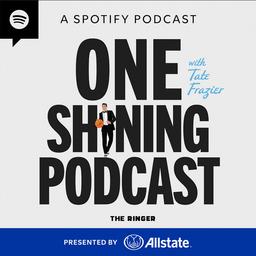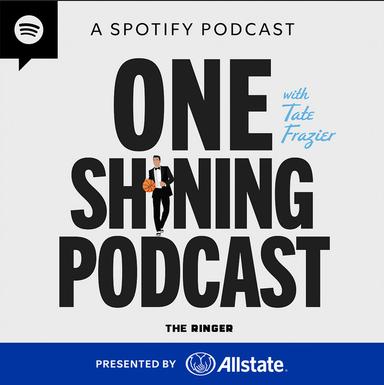
When the college season started, there were some murmurs about a general lack of “wow” moments from Cooper Flagg. Now, with a few outrageous performances in the books, I think it’s safe to say that Flagg has cemented himself as the surefire no. 1 pick in the 2025 NBA draft. That said, Flagg doesn’t necessarily fit the platonic ideal of a unanimous no. 1. Flagg has been hyped as the prince that was promised—partly because he’s American and the NBA discourse seems obsessed with finding the league’s next “face”—but we don’t entirely know exactly what Cooper is or what he’ll be at the next level.
Hear me out: When a team lands the no. 1 pick, they’re not just aiming to secure the best talent, they’re also hoping for a foundational player that they can build everything around. The path forward can be treacherous for any rebuilding club, but it’s much easier when there’s a North Star lighting the way.
Paolo Banchero and Zion Williamson are imposing downhill forces who can handle and pass the ball with some craftiness, so you’ll want some shooters to buy them space. Cade Cunningham is a pick-and-roll operator, so you’ll need a lob threat and some shooters. Victor Wembanyama just needs someone who can throw an entry pass.
Flagg does a lot of things well, but thus far, he lacks a defining trait. So, even though any team would love to have his versatility and all-around contributions, his impact on the direction of a roster is less obvious.
Nearly everything that excited us about his game before this college season has translated, with a few things regressing to the mean. It’s also very important to note in any evaluation of Flagg that he came into college basketball [intense Steve Coogan as Michael Caine voice here] at only 17 years old.
The baseline for success is high. But in what areas could his game spike to the moon? Here’s a look at the ways Flagg has shown through 23 games at Duke that he can impact the game … and the room he has for improvement.
Defense
I was downright slobbering drunk on the reels upon reels of tape of a high school–era Flagg bearing down on would-be finishers like a goddamn demon of the night and scaring them out of ever attempting a shot at the rim again. His Cirque du Soleil act as a help-side rim protector stupefied me at times. At Duke, he’s still been disruptive defensively—a steal percentage of 2.9 (93rd percentile) and a block percentage of 4.4 (71st percentile)—but there hasn’t quite been a reign of terror. College players are obviously more skilled as finishers, in addition to being bigger/stronger/faster, but Flagg’s willingness to disengage from his assignment and hunt those types of blocks has fallen off in favor of maintaining the integrity of Duke’s overall defensive scheme.
Still, I remain impressed by Flagg’s ability to string together sequences of exceptional focus and repeated efforts. Watch him monitor this UCLA cut that flows into a pin-down, followed by a fake and then a real handoff on the opposite side of the floor, on the edge of his periphery without overcommitting. He then stunts toward the driver to shrink the gap and force this pass to be floated to the corner, and then he funnels the corner driver toward his teammate for a tough, contested shot.
He’s never going to miss an opportunity to attack a situation with effort or activity. Simple in-game adjustments are a regular thing for him, and you can tell that his pride is very much entangled with what other players are able to do against him. It’s a small thing, but I noticed in Duke’s recent game against Boston College that BC ran a left-side dribble handoff and Donald Hand Jr. immediately jacked and made a 3 because there was a window of space. Later, BC ran the exact same action and Flagg snuffed it out before Hand could even ponder shooting it.
Flagg communicates, his posture away from the ball is rarely stiff or unprepared, and he’s almost never caught watching the ball—a rarity for a freshman. Let me emphasize that one more time: It is ridiculous that a just-turned-18-year-old is this mature and engaged on defense while carrying one of the biggest offensive loads in the country (and doing it efficiently!). They play different positions, but in terms of two-way impact for a player this age, only Anthony Davis and Chet Holmgren really rival what I’ve watched Flagg do this season.
Cooper’s IQ, size, and twitch athleticism are his most effective tools. Can he contort and navigate ball screens or mirror ball handlers like Jaden McDaniels, Mikal Bridges, or Amen Thompson? I would argue that he can’t. You can see that Cooper bends at his back more than he sits with bent legs, which might partly be why he rockets so quickly from a standing position without loading up on his knees. Is his frame as solid and lower body as sturdy as a Jimmy Butler or a Jayson Tatum? Again, I feel like the answer is no, but he’s never going to be a target or anything close to it.
My expectation is that Flagg will excel as an elite help defender and hold up really well within team concepts, but he won’t be able to anchor a topflight defense. There will be tons of big-time erasures around the rim (almost in the way that Tayshaun Prince swatted stuff away in the mid-2000s), and I think he’ll be an exceptional defensive rebounder at his position, with the ability to lead the break going the other way. That ability—to capitalize on defensive playmaking with immediate offensive competency—is an enormous weapon for a team to have, and Cooper has a ton of it.
Scoring
Flagg has seen an incredible leap in scoring efficiency from nonconference play to ACC action. It’s difficult to muster a fully satisfying explanation for why, but I have some guesses. First, I think Duke has looked like a more mature basketball team since Sion James entered the starting lineup for their big home win against Auburn and improved the quality of looks for everyone. Second, Duke, a team led by freshmen, played a pretty difficult nonconference schedule that included Kansas, Arizona, Kentucky, and Auburn, and their league is just not as challenging. Third—and this is my strongest hunch—Flagg simply has a way of figuring shit out.
Some tweaks have been made, but this was not a case of Jon Scheyer and Co. dialing things back after overloading Flagg on offense. His attempts didn’t flinch, yet he still took nearly a 23 percent leap in 3-point percentage and had more than an 8 percent uptick from 2 once Duke got into conference play.
I’m pretty confident that, at his peak, Flagg will at the very least become a capable catch-and-shoot player, with some cautious optimism that he could even progress beyond that. The growth of his shot mechanics over the past three years has been amazing—his arc is solid, the lines from his toes to his fingertips are straight, and there’s no noticeable hiccup in his energy transfer.
Context is so important when we’re talking about shooting, and I, for one, am happy to live in a time when we have the tools to look past numbers that might mislead in either direction. Bruce Bowen led the league in 3-point shooting percentage in 2002-03, but was he the best shooter in the NBA? Of course he wasn’t. Undynamic shooters can’t be sold as superior to dynamic shooters taking tougher looks simply because the overall percentage is higher.
So, while on paper Flagg’s shooting seems a little iffy from beyond the arc, looking at where his shots from 3 are coming from and how he takes them reveals the full picture. Through his first 23 games at Duke, he’s attempted 88 3-pointers, and although his overall percentage on the season is reasonably good (36.4 percent), that number is leaning on how strong he’s been from the top of the arc as opposed to either wing. Flagg has a heavy preference for moving left, and when he’s spotting up—when, more often than not, he’s moving left and keeping his feet down—his 3-point percentage jumps up to 43.2. In high school and during the summers with his grassroots team, he’d started to embrace full elevation on his on-the-move attempts from 3, but we’ve seen a lot less of that at Duke.
He’s also shooting only 37.5 percent on dribble pull-up 2s, which would also typically seem concerning. But a lot of the bad attempts come from attacking to his left and spinning over his right shoulder for a heavily contested fadeaway from 8 feet. He could easily lop this off his game entirely.
Flagg can rip the rim down, but when he’s not trying to dunk on everyone in sight, he’s shown that he’s very comfortable finishing through contact against bigger and heavier defenders, with either hand (but often with his left). Just short of the rim, Flagg displays great overhanded touch most of the time—he’s rarely contorting or improvising once he’s left the ground—and that touch shows up constantly in the short midrange. It’s the place where he does the most damage on a consistent basis, and if there’s a size advantage to exploit in this way, he’ll do it. I would rather see that kind of aggressiveness still developing than attempt to prod a less aggressive player who is further along. To me, this is a good sign for which direction Flagg will go.
Ultimately, the things Flagg is trying in college may eventually pay dividends—pushing hard boundaries and experimentation help foster growth. But polishing this part of his game could be a slow process that extends into his early NBA years.
Ballhandling
Flagg is dangerous from the middle of the floor, whether it’s off the short roll as a screener or flashing toward the 3-point line off a pin-down. But graduating to the next level of playmaking is among the hardest things in all of basketball to do. The difference is that the shorter distances typically start with the built-in advantage—an off-ball screen or a cut where the defense’s eyes are on one of his teammates—and the longer ones can require a ball handler to create one. At the NBA level, probing the defense with the ball in your hands for more than a couple of dribbles is a ridiculously difficult thing to do at Flagg’s size. During the 2023-24 NBA season, only nine players in the entire league 6-foot-7 or taller managed to maintain a high scoring efficiency while averaging at least 2.5 dribbles per touch and logging more than 1,000 touches. It’s a murderers’ row of big-boy scorers/playmakers. A key commonality among them is that they own their space, they play through physicality well, and they can really handle the ball at a high level.
Big Handlers (2023-24 NBA Season)
Flagg is still blossoming as a handler, but he doesn’t exactly have that “on-a-string” ball security on that third dribble or just before it’s set to happen. My suspicion is that his prep work at the start of these drives will determine whether he’s able to improve on this. His face-up game is like a song with a great verse and chorus that’s in need of a middle eight to tie it all together and become a hit.
The accomplished handlers in our group above usually get the job done like this:
- Setup dribble: Usually some kind of lateral shake move to create the driving lane.
- Traversing dribble: Once the lane is created, the handler attacks it and forces the defense to help.
- Finishing dribble: The final bounce that’s usually in the vicinity of a rim protector where contact is created or some kind of evasion takes place.
Flagg’s initial separation beyond the arc is a work in progress, and because of that, we see a lot of instances where his first move is either not tight or quick enough, or simply not responding to the movement of the defender in a way that creates an advantage. As a result, he attacks his defender to a stopping point, and his solution to this problem has been to spin and just head in the other direction. Occasionally, it works.
But there are some reasons for optimism. I’ve been very encouraged by how observant and technical Flagg’s been with his ball fakes and the execution of his footwork when starting from a standstill.
It is also important to note that competition and circumstances do play a role. The NBA 3-point line is longer, which means a freer paint because the shooters are better, and there are fewer micro-guards peskily buzzing next to your ear.
Duke has been extremely fortunate to have some phenomenally talented forwards in recent years. Tatum and Banchero stand out as examples of what can happen when everything comes together, and while both of those players laid a firmer foundation for handling the ball by their late high school years, I do think Flagg is ahead of them as a processor of the floor and in his creativity passing the ball. So, why does any of this matter? Because if Cooper is able to bridge this gap, I think he’ll become a top-20 player in the NBA. Talking to coaches at the college level, trainers, and developmental gurus, this is one of the harder hills to climb. It separates above-average starters from All-Stars. I’m confident it can happen.
Intangibles
Normally, when we’re fairly clueless about what direction a player’s development might go, it’s because they are raw. With Flagg, we’re teetering on this tightrope between enthusiasm and uncertainty because he checks so many promising baseline boxes. Several of those boxes could remain good, not great, and he could still be a productive NBA player.
There are many paths toward a productive career for Flagg, and very few lead toward failure. A key question that I keep asking myself is this: Between these two scenarios, which is more likely?
- Flagg becomes a reliable on-ball decision-maker with a dangerous dribble pull-up repertoire, a crafty middle game, and finishing that racks up points and gets him to the foul line. He is a fairly manipulative passer who delivers drop-offs, whips skip passes to the opposite side, or tosses lobs, and is a respectable shooter off the catch. He can take on tough assignments on defense and shore up mishaps from the weak side of the floor. An elite two-way player, in other words, and an All-Star.
- His game never truly ascends beyond being an above-average help-side and team defender. He’s a decent catch-and-shoot threat, a clever cutter who can act as a connector and throw lobs or quickly get the ball to the other side. His handle and face-up scoring prowess level off to the point where a team can’t heavily lean on him in that way.
Both outcomes are on the table, but you can never overestimate the extent to which the skills and the person are inextricable. No matter how incendiary the talent, you’re always betting on people in these scenarios, and in this case, this is a bet with 9-5 odds. To me, this is a “Mahomes in the red zone in the fourth quarter” type of bet because, by all accounts, Flagg is as competitive and as work- and winning-obsessed as any prospect that I’ve studied. Cooper devours opportunities to challenge himself, and time and time again, those opportunities yield significant growth. He dominated in Maine as a high school freshman and quickly moved to an environment where he’d be playing with exceptional talent (former Montverde Academy teammates Liam McNeeley, Derik Queen, and Asa Newell are projected lottery picks) and against it. Next, he chopped a year off high school and reclassified to attend Duke a year early [cue up the Coogan-as-Caine voice again] at only 17 years old.
Have you seen any indication that he’s choking at all on the heavy usage he’s been given, on a team that’s played a difficult nonconference schedule? Some turnovers in traffic and some streaky shooting, sure, but for players as focused and clever as Flagg, reps that strain the stability of their game often end up like a basketball version of hypertrophy—stress and failure precede significant gain and growth.
Coop seems like a good kid, but he gets that pissed-off look on his face where it seems like he’d rather be trampled by, I don’t know, Guerschon Yabusele than consider losing a game. He has that extra gear that the great ones have, where the bigger the stage, the more intense and focused he seems to get. I think he pretty obviously plays better angry.
So, while his development might lack the obvious plot points of a familiar template—the non-shooter learns to shoot, the dominant scorer learns to pass, the dominant defender learns to score—the flux of Cooper Flagg is a wonderful thing.



